Mars looks quite hospitable in the photos, but all is not quite as it seems. Our Earth based intuitions lead us astray, and the planet is full of surprises. Though great to explore, it might not be so ideal as a second home.
Mars looks Earth like
You might think from the photos, that Mars looks like a reasonable enough place to live in. It looks pretty much like a desert landscape here on Earth, and you can imagine that if you set up lots of greenhouses, and use the resources of the desert itself to make new greenhouses, you could hope eventually to colonize the entire desert.
It's not too surprising that many of those who are keen to colonize the solar system take Mars as their first step in the process.
Pathfinder photograph of the surface of Mars (white balanced to look like an Earth landscape, to assist the geologists)
Artist's impression of Mars One habitat landing on the desert landscape of Mars
Humans as great explorers and colonizers
Another thing that may encourage you in this is the idea that humans are great explorers and great colonizers. There have been many successful colonizations since ancient times.
Taking North America as an example, then when the First Peoples colonized, there were no humans on the continent, and that was a successful colonization. The Europeans later colonized N. America and again established new colonies successfully.
Vikings attempt to colonize North America
It's often forgotten that there are such things as failed colonization attempts. It's not guaranteed that if you try to colonize somewhere that you will succeed. The Vikings also tried to colonize N. America. There is clear archaeological evidence of this.

They first colonized Iceland where they set up a permanent population. They were great colonizers and great explorers, a very hardy resourceful people. They were able to set up a colony in Greenland. At that time it was somewhat warmer than it is now. They were dependent on agriculture and couldn't live off the land like the Inuit. Then finally, they set up a colony in N. America which they called Vinland.
They actually had three different names for different parts of N.America:
- Vinland, which may have meant "land of the wine" or "land of the meadows"
- Helluland, "land of flat stones"
- Markland: , "the land of forests":
But the part where they set up the colony was Vinland.
Here is a photograph of a re-enactment of that first landing, the Viking invasion of N. America.

So, they arrived there, they started to colonize it, you can imagine in the boats, these prospective colonizers with various supplies and provisions and possessions, full of ideas of things they would do on this new land - they wouldn't have known how big it was, which they had heard do much about - so much more fertile than Greenland.
So, it is a great mystery, why didn't they proceed to colonize N. America. But perhaps part of the reason is that they had so much sea behind them, and it's a very long journey just from Greenland and Greenland is just a small colony and a long journey there from Iceland. So it might have been a supply chain issue.
Then when you get to N. America, there's also the indigenous people to deal with. To start with they were quite friendly but they didn't continue in the same vein and the Vikings didn't get on so well with them. Which you can well understand from the way the Vikings typically behaved, was quite common that this happened. So this might well have been another element of the reason why they weren't able to colonize N. America.
It's not really known why, these settlements didn't continue for long, just a few years. Apparently trading continued for a long time, after that. There was much they could get such as trees, no trees in Greenland, and so forth.
Many of the same issues for Mars
Many of these are issues we may encounter with Mars. I'd argue that the Viking attempt is a much better model of what is likely to happen if we attempt to colonize Mars, especially if we try to do it very quickly.
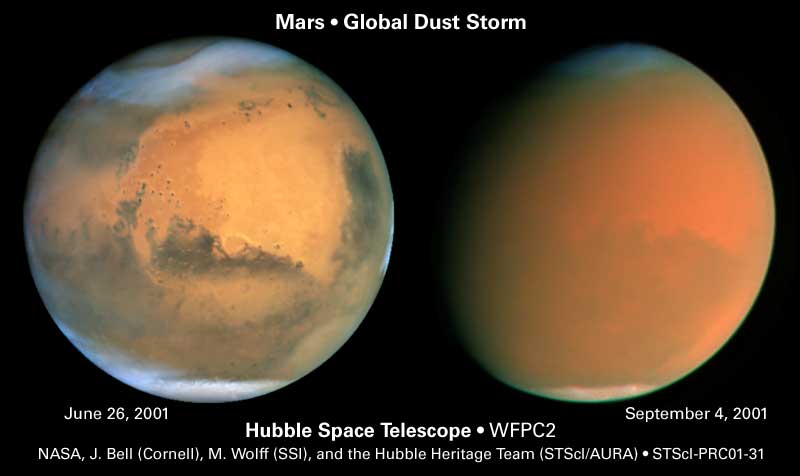
We have a tremendous difficulty of supply to Mars. It takes six months to get there, but it is worse than that, we can only do the journey there every two years. So, if you get to Mars and you discover you have the wrong size of screwdriver, or there is something you need, that you haven't got with you, you then have to wait for two years at least before you get it.
Highly technical journey - emergencies on way to Mars
It's going to be a highly technical journey to Mars, because there are such intricate systems needed to keep humans alive inside a space station, and it would be exactly the same on the surface of Mars. There are many cases where the ISS has had problems with their life support systems, and sometimes they have had to supply oxygen from the Earth. You wouldn't be able to supply oxygen from the Earth to Mars in the case of an emergency.
So you may very well get Apollo 13 type incidents occurring, at the distance of Mars. If you have ever read or listened to the Apollo 13 communications during the emergency, or read the transcripts, there is a lot of need for confirmation of the readings and so forth. So if you had an emergency like that at the distance of Mars, even highly trained astronauts, and one of the astronauts, Swigert had practically "written the manual" on command systems malfunctions. Even so it was quite a tricky situation to solve with a lot of communication back and forth between the Apollo 13 astronauts and Earth.
Photograph of exterior of the Apollo 13 spacecraft showing the damage caused by the oxygen tank explosion. If something like this happened to a Mars expedition - perhaps as a result of a micrometeorite hit - there would be many communication difficulties involved in trying to sort it out with communication delays with Earth of possibly over 40 minutes.
If an emergency like that happens out at Mars, you have to cope with the lightspeed communication delays. It takes 4 minutes for light to get to Mars at its closest, and if it happens a bit later when Mars is further away, it will be well over 20 minutes, or over 40 minutes with the return trip. I know our telemetry is better than in those days but there are sure to be unexpected things that happen, even with highly technical people at Mars, there are gong to be situations where if something unexpected happens, it is going to be quite difficult to resolve an ongoing issue if there is need to communicate with Earth during the crisis.
When people communicate there are always small misunderstandings to sort out, and when you finally get your instructions from Earth and understand what you have to do, and Earth understands what the issue is, and then you try to carry it out, and problems may occur, maybe it is not quite as predicted. Maybe the telemetry has told you things a bit wrong. So you have to communicate this back to Earth and have another 40 minutes delay before they can tell you what to do.
It is going to be something of a nightmare if you have a really serious issue at the distance of Mars. So just for that reason, I would argue that at the distance of Mars, it is not a good idea to start thinking about something as ambitious as colonization. And we need to be very cautious just sending highly trained astronauts out to Mars, to start with.
What if someone said "Let's colonize the Sahara desert"?
Then you might wonder, why is there so much interest in colonizing Mars? There wouldn't be so much interest if someone said "Let's go colonize the Sahara desert". So even if you thought Mars was as habitable as the Sahara desert, why is there so much interest in colonizing Mars?
Why colonize Mars? Why not colonize the Sahara desert instead? It is far more hospitable than Mars.
"What would you say to a Martian?" - early ideas
I think this goes back to the early science fiction, which in turn goes back to early astronomy. The reason I think this is because it so often comes up, with all the films, and, it is just half joking, but for instance reporters sometimes ask Mars One applicants, "What would you say to a Martian".
Historically it goes right back to the nineteenth century when it was thought quite likely that there was life on Mars or on the Moon. This would not be a fringe idea it would be a quite normal idea for an astronomer to have, and if you look at an astronomy paper of the late nineteenth century, they have such things as suggestions to dim all the lights of London as a way to communicate with possible astronomers on Mars who would notice this and hopefully respond in some way that we could see.
So when Percival Lowell started doing his drawings of Mars, from a high observatory with excellent seeing conditions, doing careful drawings at times of best seeing, and having at the back of his mind surely the idea that there is very likely to be intelligent life and technological civilization on Mars.
Here is what Mars looks like to us today (I'll keep re-using this photograph of Mars)
Here are his very best drawings of Mars as seen through a very powerful telescope of his time
(I haven't tried to get a photograph of Mars at the same orientation as his drawings, just talking about the general impression of the planet).
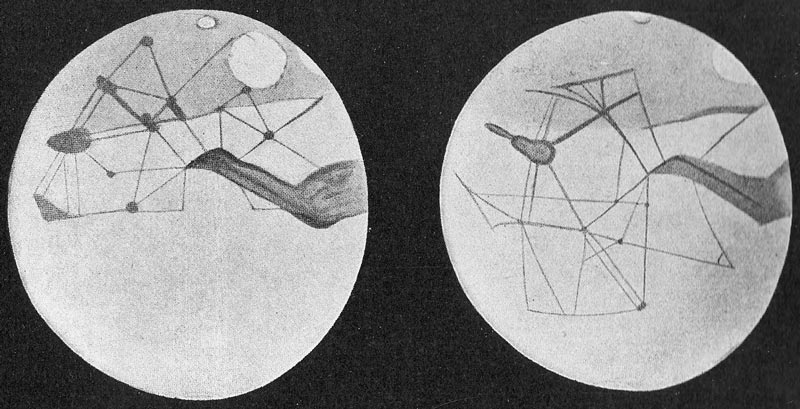
As you can see there is very little resemblance between that and Mars as we see it now. He thought that these lines were canals. Of course we would not see the canals themselves, as they would be very narrow, but we would be seeing the lines of vegetation along the canals, and these are oases and irrigated regions of Mars.
It's a very nice appealing picture of the Martians irrigating their planet as it gradually got colder and dried up. This occurs many times in science fiction. The very first science fiction description of this was about the same time by Edgar Rice Boroughs, famous as the author of the Tarzan novels and he wrote these novels about Mars. Very romantic novels involving such things as Martian princesses.
"A Princess of Mars" is the very first book in the John Carter series about Mars by Edgar Rice Boroughs
Soon became clear Mars could not support animal life or Earth like vegetation
Not very long after he wrote these novels, it became clear to the astronomers that there were no canals on Mars. This became clear during the 1909 opposition. Every two years Mars gets much closer to Earth and you can observe it more closely. By then they had much better instruments and photography was developed further, and it became clear to the astronomers of the time that there simply weren't any of these canals on the planet.
What's more they could tell quite a bit about the atmosphere on Mars by then, using spectroscopy. Then there was the first paper saying that there is no oxygen to speak of in the Mars atmosphere, you might be surprised at how early it was. It is in 1909 this very same opposition. It wasn't conclusive yet. I think you may be surprised how early it became conclusive. This was a paper published by the Lick observatory in 1926.
Lick observatory in 1900. First conclusive proof that there is almost no oxygen on Mars was a paper from this observatory in 1926
By then it was pretty clear there was hardly any oxygen in the Mars atmosphere. They did it by a technique which involved looking at Mars as it is receding from Earth at its fastest. At that time you can use the very slight shift in the light towards the red end of the spectrum (called the red shift) and you can use that to disentangle the light passing through the Mars atmosphere to deduce things about oxygen in its atmosphere.
They came up with a bound that the amount of oxygen in the Mars atmosphere was at most a third of the amount of oxygen you get at the summit of Mount Everest. So clearly you are not gong to get things like people and cows and horses on Mars. We now know it is much less than that.
This is an easy observation to do with modern astronomy and we keep tabs on the Mars atmosphere from Earth. If you have come across these conspiracy theory ideas, for instance one of the comments to my science20.com article, linked to many fringe pages saying that there is plenty of oxygen on Mars. Well it is simply impossible that there is some major conspiracy hiding this knowledge of the oxygen levels on Mars because astronomers anywhere in any country on the Earth can measure this.
So we discovered there is not much oxygen, but it was still thought that there might be vegetation since that just needs carbon dioxide, and there seemed to be seasonal variation in the dark patches. It is really only when you got to the Mariner flyby missions and the Viking landers that it became clear that you could not have vegetation on Mars like we have on Earth, trees, grass, and things like that.
Extremely cold
It became clear, apart from anything else, that Mars is extremely cold. You may look at the photo, and see the icecaps, and you might think, that is the extent of the cold regions, just as it is on Earth, and that the rest is reasonably warm, quite habitable.

But this is misleading. Mars is actually much colder than it seems. It is another of these things where it is a quite surprising planet. You keep getting these surprises where it is not quite as you expect. It is so very different from Earth in many different ways, and our Earth based intuitions they just don't work when transferred to Mars.
So, you look at that and try and guess how cold Mars is, this is at the equator on Mars, so you might think - I have given a pretty strong hint that it is very cold, so you might think, somewhere like Canada. You might start thinking, Siberia, or north of Canada. Well, it is way colder than that. You might start thinking the north pole, but that's not nearly cold enough.
In fact, the closest we have on Earth to the coldness you get on Mars, is Antarctica, and particularly, the interior of Antarctica, because the coast of Antarctica is not so cold.
In the very interior, in winter the interior of Antarctica goes to -60 °C (Centigrade, not Farenheit) and in summer it is -20 °C. The very coldest temperatures measured in Antarctica is -89 °C in the Vostock station which is not so very far from the S. pole, and this is one of the Russian stations. This is a cold enough temperature so that carbon dioxide would begin to freeze out as dry ice (happens at −78.5 °C (−109.3 °F) ).
Well the temperature on Mars at the equator at night, frequently gets cold enough to be below the temperature at which carbon dioxide freezes out as dry ice. You can go and look at a weather station with the weather today at Curiosity. If you do that you will see, (over the year) you frequently get temperatures well below −78.5 °C The coldest temperatures recorded close to the equator, are less than -100 °C, more than a third of the way to absolute zero from typical room temperatures. So we are talking about a really very cold place.
However, in the middle of the day, it does heat up and it can get surprisingly hot, in the middle of the day in equatorial regions, the highest temperature recorded is a surprising 35C in the shade.
So that is Mars with these extreme temperature fluctuations. This is very different from Earth. The poor Vikings wouldn't have a chance somewhere like Antarctica.
Why is Mars red, not white?
There is a question here, given how very cold Mars is, why isn't the surface of Mars completely covered in ice? Why is Mars red; why isn't it white?
It is actually not properly understood.
In the case of Earth then it happened several times, hundreds of millions of years ago, that the seas froze. Not just the continents, the entire surface of the Earth becomes what is known as snowball Earth. In these conditions, because it is white, radiating heat into space, it remains cold for a very long time. Earth manages to get out of that through the process of continental drift. You still have the ocean beds underneath all this, and the circulation of continental drift is not affected in any way at all by being frozen over on the surface. So, this continues.
How Earth got out of its snowball phase
The carbon dioxide gets dissolved into the oceans and becomes limestone, and once the ocean are frozen over, this limestone is still down there, and this gets subducted beneath the continents, and it returns to the surface in the form of carbon dioxide again, through the volcanoes.
So this is a continuous cycle that is going on anyway, but during snowball Earth, it can't get back into the ocean again, so carbon dioxide builds up and up and up and eventually the Earth starts warming up. (This process is speeded up by formation of clouds which also warm the surface).
Same process doesn't work on Mars
This same process is not gong to work on Mars because Mars does not have any continental drift. The continents just started to split apart with the Valles Marineres, which is like a gigantic rift valley, at least that's the leading assumption anyway, but it didn't get very far.
There are volcanoes on Mars and they put some carbon dioxide into the atmosphere but they are not being continually fed by the subducted limestone. So there is no way the snowball Mars could get out of it the way the Earth did.
(Incidentally the early Mars does have an equivalent of Snowball Earth, it is the cold dry Mars which according to one idea anyway, it gets out of by catastrophic flooding, with release of greenhouse gases possibly including methane see Preservation of Random Megascale Events on Mars and Earth)
So to go back to Mars, part of the reason it is not completely covered in ice is because it didn't have so much water to start wtih. It is a bit of a mystery actually, why that is, because Mars is further out in the solar system, and according to the theories, the further out you are, the more ice or water you should have because it is colder when it starts to condense. So it's a bit of a mystery why it has less ice than the Earth did. One possibility is that in the early solar system there were frozen planetesimals from the asteroid belt that missed Mars and hit the Earth. Anyway for whatever reason, it is not thoroughly known why this is, but Mars may simply have had much less ice and water than the Earth, and all the evidence seems to suggest this.
But that doesn't fully explain this, because it is known that there is ice below the surface of Mars, and not just the ice caps, the ice caps don't give you a clear idea of the extent of the ice on Mars. Over much of the surface of Mars, below the permafrost layer which is about 2 cm, over much of the higher lattidues of Mars, there are these areas of ice quite close to the surface.
Thin atmosphere
So why isn't the ice on the surface? This though is fully understood. It is all connected with the thin atmosphere. You may have heard of the Armstrong limit. As the atmospheric pressure goes down, the boiling point goes down. When the pressure goes down to 6 % of Earth normal, that is the pressure at which water will boil at the temperature of blood. Your saliva would boil and the inner linings of your lungs would boil at that temperature. Whereas your blood is contained within your capillaries, so that is not going to boil.
The average atmospheric pressure on Mars is about the tenth of the Armstrong limit, it is about 0.6%. The highest atmospheric pressure on Mars, at the deepest point, the floor of the Hellas basin, is about 1% of Earth normal pressure, so is still well below. At the very highest pressures on Mars you could get liquid water forming briefly. However its boiling point is just a few degrees centigrade. So it is very close to boiling as soon as it forms, so it very quickly evaporates.
This doesn't yet explain why there is no ice, but it turns out that over most of the surface of Mars, then the ice is below the point at which it goes straight from the solid state into gas, as water vapour. So over the equatorial regions of Mars, then the ice very readily turns into water vapour. Indeed it does it much below zero degrees C because it is such a thin atmosphere, and over geological time, even deep below the surface in equatorial regions, then Mars gradually loses all its ice, it gradually moves up towards the surface and disappears. The ice could get trapped on the way up below an impervious layer, and it is known that there are some areas in the equatorial regions where there may be ice deposits a meter or so below the surface, there are some observations from orbit that hint at that. But generally it is extremely dry in the equatorial regions.
So that is the reason why Mars although it is colder than the snowball Earth, yet is not covered in ice, and that is probably the reason why it never became a snowball Mars, because it is so dry, and with this thin atmosphere also, contributing to keep the ice away from the lower latitudes, so plenty of opportunity for it to be warmed up by the sun, and you have these very small polar ice caps.
At times (depending on the axial tilt) the ice caps get very big but they never completely cover the surface of Mars.
Cold, Dry, Thin atmosphere, Spacesuits only
So our Mars is now beginning to seem considerably less habitable I imagine. It is extremely cold, extremely dry, and its got a very thin atmosphere which counts as a vacuum. You absolutely would have to wear a spacesuit all the time on the surface, remove it even for a few seconds and you are dead. And if you can't get back to your oxygen supply in time - even just because, say, of a twisted ankle, again you die. Forget something in your checklist as you put on the suit, and again, it could be fatal.
If you can't repair your spacesuit then you are stuck in your habitat, you simply can't go out.
And we aren't talking here about something simple like an aqualung. A modern spacesuit costs about $2 million to build (that's after you design it) and about 5,000 hours of work to build it, about two and a half years of work for a single person to build a spacesuit, assuming you have all the necessary skills and equipment, materials and parts to do it. It is a more accurate analogy to think of a spacesuit as like a mini spaceship, complete with life support, than a complicated aqualung.
So that's Mars.
Closest analogue to Mars
You might wonder, what is the closest analogue to Mars on Earth.
Antarctica is right in terms of temperature, Antarctica is cold enough in terms of temperature but it's got all the ice, which is a useful resource. The ice makes Antarctica far more habitable than even the Mars equatorial region.
So what area of Antarctica is equivalent to the Mars equatorial region. Well it turns out there is a place. It is a little spot, you can almost see it in this satellite photograph (near the top) the McMurdo dry valleys. In this photo, can you see an area of dry land near top left of the main part of the Antarctic continent?
What happens is that the mountains hold back the ice sheet, the ice sheet doesn't quite cover this part of Antarctica. Then with a very high ice sheet you have this cold air cooled down by the surface of the ice and under gravity it is very heavy and you get these winds that blow down these valleys at hundreds of miles an hour and these dry the valleys out and make sure that there is never any ice there.
Here is a picture of one of these valleys.
It looks very like Mars, the Martian landscapes look very habitable in the pictures with the rovers, and this looks very habitable, But it is in fact extremely cold, and extremely dry and no ice there. It looks like it could be Iceland or somewhere like that, but in fact, this is Antarctica.
So scientists, looking for places on Earth which could give them some idea of what Mars is like, this is one of the places they study.
The other main place they study is the Atacama desert in South America. This has high mountains so you get cold conditions especially at night and it is also extremely dry, and there is no ice or snow, So if you want to simulate Mars, this is the best we have got on Earth.
So you look at that and might think, surely that is a completely lifeless landscape, But as it turns out, there is actually life there, called crypto endoliths. Crypto means they hide and endolliths, in the rocks. So underneath the surface of the rocks you get these lifeforms.
Mars has no indigenous people, but ...
Mars has no indigenous peoples to be concerned about. But it may well have crypto-endoliths and other life forms if we study it carefully. There may be places on the surface nearly as hospitable for miicrobes as the McMurdo dry valleys or the high Atacama Desert, oases for life where hardy microbes can just survive on the surface. This life, tiny that it is, could be just as problematical for prospective colonists as the indigenous peoples were for the Vikings.
I'll talk about that some more in the other articles. If you thought this was quite bad for colonizing Mars, well there is worse to come. But if you thought this is getting quite interesting for exploring Mars, well there is a lot of interesting stuff to come.
Not your ideal home. Not even a "fixer upper"
It's a fascinating place to explore, but really really, I don't think it is your ideal home (British understatement there).
Especially for first time colonizers of space, but just think, it is so cold, so dry, atmosphere so thin, and various other disadvantages still to come and then you've got the supply chain problem. If you ever have an emergency, or if you ever need something, it is so so far away from Earth.
I am hoping that some of the people intending to colonize Mars may think a little bit more about it. The reason for doing that is not because I don't want people to colonize. I think it is great for people to colonize.
It is just that I think it is going to be like the Vikings, when they tried to colonize Norrh America, it is not going to work. Also, there are certain reasons, because of the possibility of life on Mars, that gives you other reasons why it is not ideal for colonization, as we shall see.
Yet, there are ways we can explore it. So how can that be? How can we explore Mars very thoroughly, on the surface, and yet do that without colonizing it?
You might like to think about that if you haven't read my other articles and we will find that out eventually as we get towards the end of this series.
For the next article in this series, see:
The other articles in this series
4. Space Habitats For Colonists And Mars Explorers - And A Safe Way To Put (Telerobot) Boots On Mars
Video for this article
1. Reasons not to live on Mars, great to explore - cold, dry, vacuum, supply chain (part 1)
(this article is a lightly edited transcript of the video)
You can also watch the rest of the videos in this series straight away (probably will be a while before I make them all into articles), they are here: Many reasons not to live on Mars, great place to explore
Related articles
For a shorter treatment of the same ideas see: Ten reasons NOT to live on Mars - great place to explore.




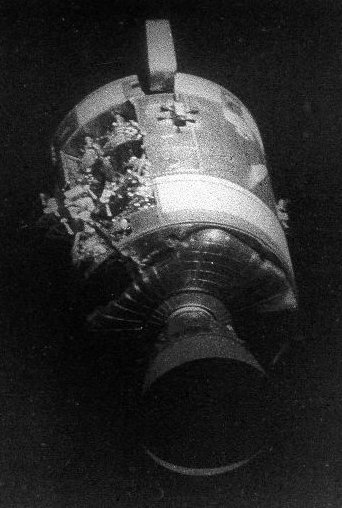



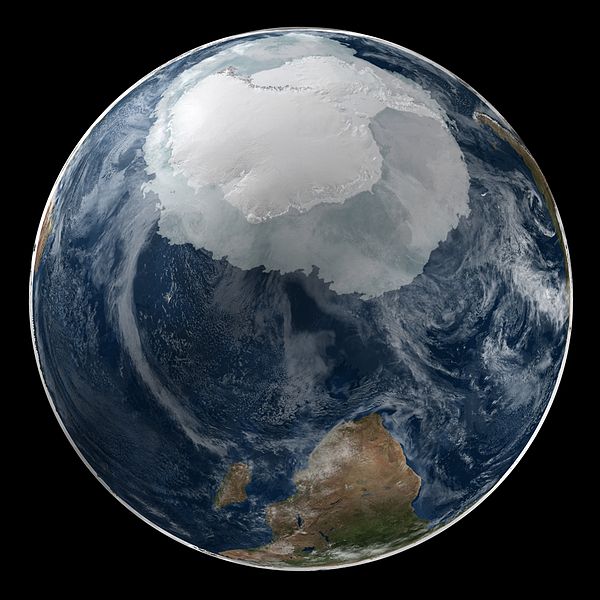
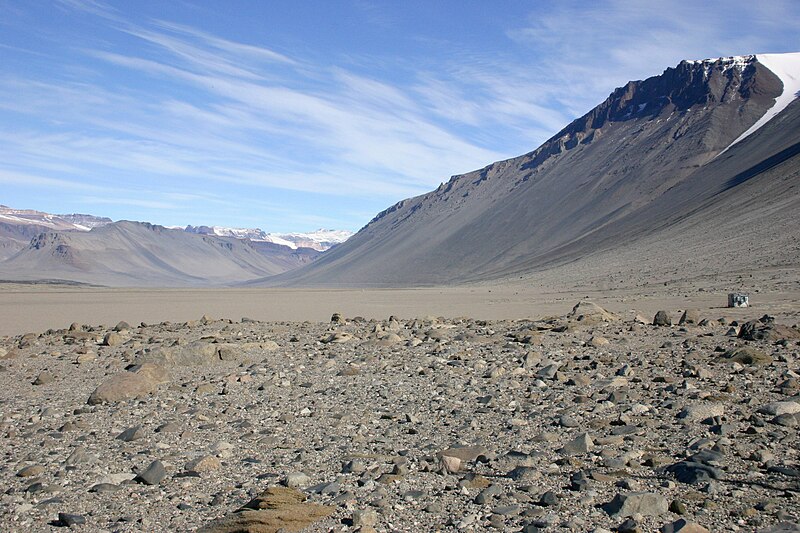


Comments